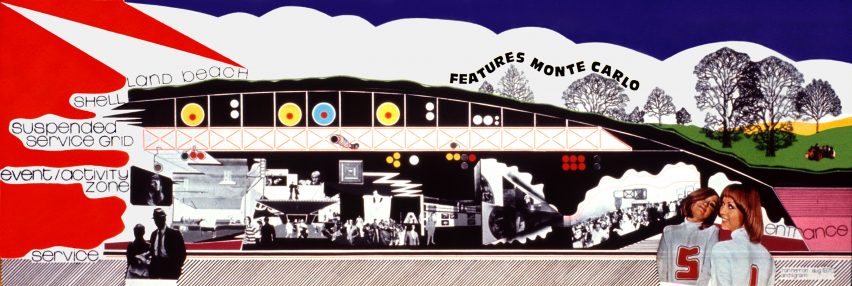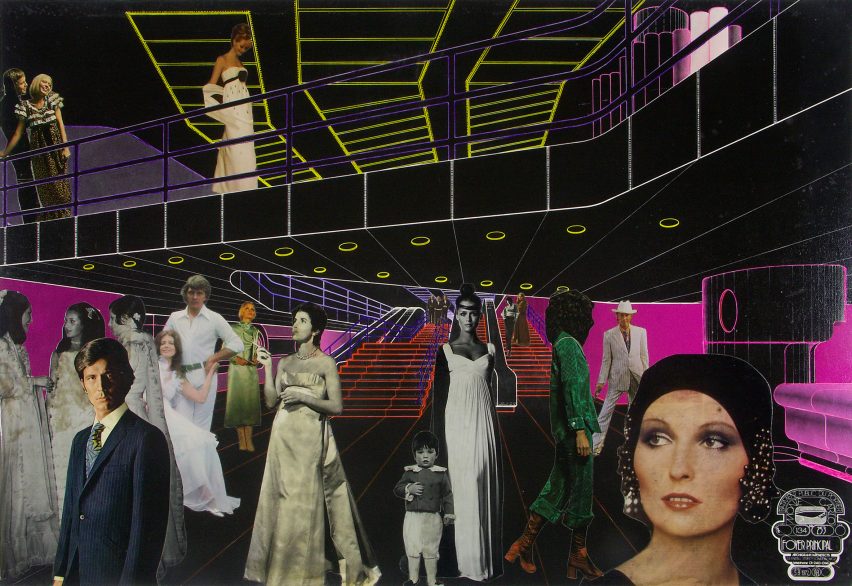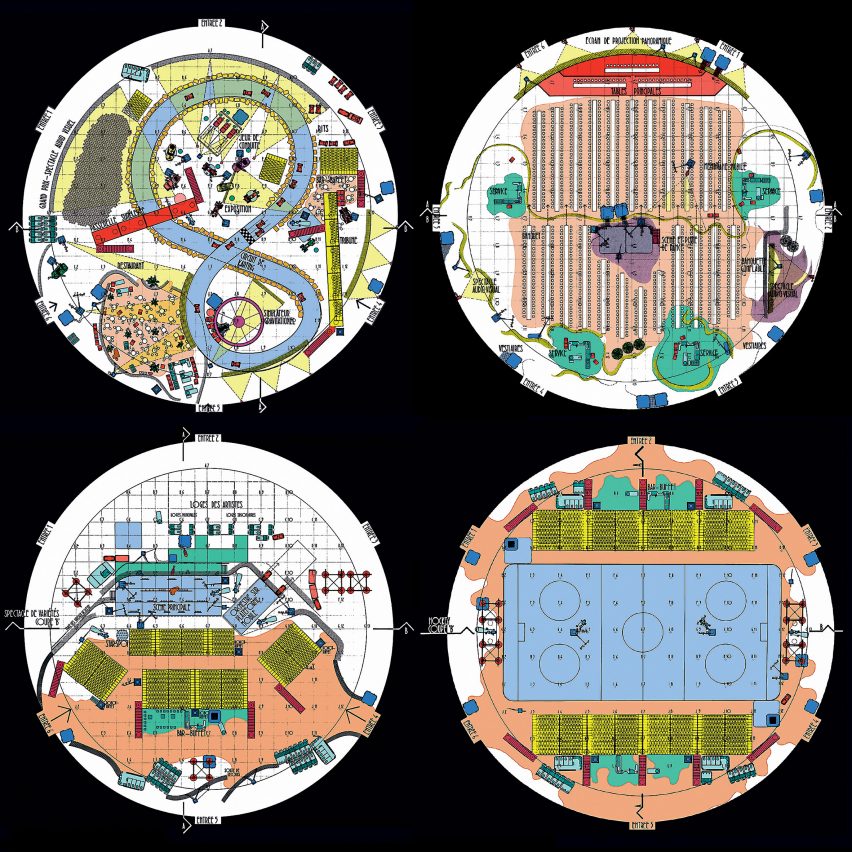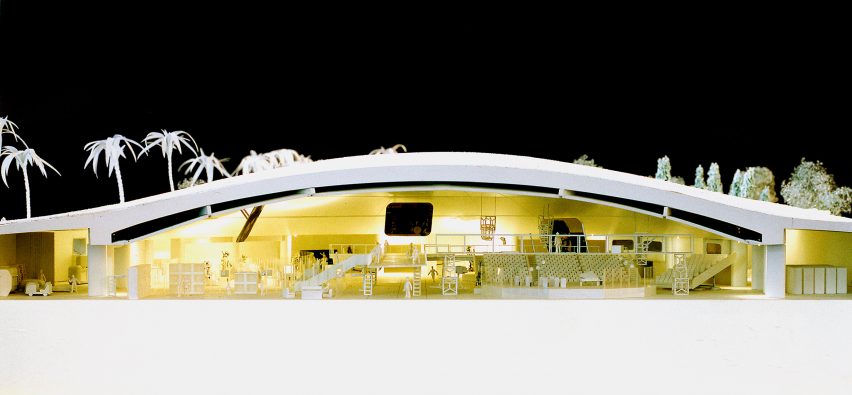"There is a practical side to Archigram, it's not just funny drawings," says Dennis Crompton
In the final instalment of our exclusive Archigram video series for VDF, architect Dennis Crompton explains that the avant-garde architecture group didn't just want to create conceptual projects and almost realised a building in Monte Carlo.
Archigram was an experimental collective of architects that became famous for its radical architecture concepts in the 1960s and 1970s.

Although individual Archigram members have built buildings – before or after their involvement in the collective – Archigram famously never completed a building as a group.
Archigram almost built a building in the 1970s
Things could have been different, according to Crompton, who believes that many of Archigram's ideas could have been realised.
"There is a practical side to what Archigram members do, it's not just highfalutin, funny, pretty colourful drawings and so on," he said in the video, which Dezeen filmed in London and is sponsored by Enscape.

"Had all been well, we would have built a building in Monte Carlo in the 1970s. As it happens, in 1974, there was a tremendous international financial crisis and our clients suddenly weren't able to continue with the project, so it was cancelled."
"What are we doing here?"
In 1969, Archigram was invited to take part in an international competition to design a sports and entertainment centre by the sea in Monte Carlo, Monaco. Other invited participants included architects such as Ricardo Bofill, Fernando Higueras, Frei Otto and Reima and Raili Pietilä.
The architecture collective, which comprised Crompton, Peter Cook, Michael Webb, David Greene, Warren Chalk and Ron Herron, initially believed they had been invited to take part in order to provide light relief, according to Crompton.
"We looked at the list of participants and it's full of all the star architects of the time," he recalled. "And there was Archigram. We thought: 'What are we doing here?'"
"We thought: 'Oh, we know what it is. They want something that, at the end of the day, rather than looking at yet another architect's thing, the jury can be taken over and have a drink and look at what Archigram have been doing. Great fun.'"
"So we thought: 'Sod these guys! We are not the entertainment. We are going to put into practice what we learned from our work of the past seven or eight years. We'll do this job.'"

Archigram proposed a domed structure, which was partially submerged and covered with grass to provide green public space on top.
Inside, the building featured a central circular space, which could be reconfigured for different purposes via a kit of moveable parts, an idea that drew from Archigram's Instant City concept, which former member Cook discussed in the previous video in the series.
"To the amazement of the English architectural community, we won the competition"
"The brief was for an entertainment centre," Crompton said. "And in order to illustrate our solution, we had to produce eight different layouts that were possible in this centre, for different situations, including a gala dinner, an ice-hockey match, a Grand Prix exhibition, a go-kart track."
"So we thought: 'That's what we'll do. We'll invent a whole series of building components, which can be manipulated to service different situations.' And to the amazement of the English architectural community, we actually won the competition and got the contract to build the building."

Ultimately, the financial crash caused by the 1973 oil crisis and 1973-74 stock market crash scuppered the project, and Archigram disbanded a few years later in 1975.
"If the situation in the 1970s had been different, we would have built our building in Monte Carlo," Crompton said.
Exclusive video series explores the origins and key projects of Archigram
Founded in 1961, Archigram was an influential avant-garde collective of architects. Although the group never built a building, its radical conceptual projects would influence many subsequent architects, including pioneers of high-tech architecture such as Renzo Piano, Richard Rogers and Norman Foster.
This video is the fourth and final instalment in a series of exclusive interviews with former Archigram members Cook and Crompton as part of Virtual Design Festival.
In the first instalment of the series, Cook explained the origins of the group and how it rose to prominence through a series of self-published magazines. In the second video, Cook and Crompton discussed Archigram's Plug-In City concept for an elevated city of capsule homes. The third movie saw Cook explain the group's Instant City concept for a temporary city that can be set up overnight.
The video series was filmed by Dezeen in London and sponsored by Enscape, a virtual reality and real-time rendering plugin for architectural design programme Autodesk Revit.
All images are courtesy of and copyright of Archigram. You can browse more images from Archigram's archive online at The Archigram Archival Project.
